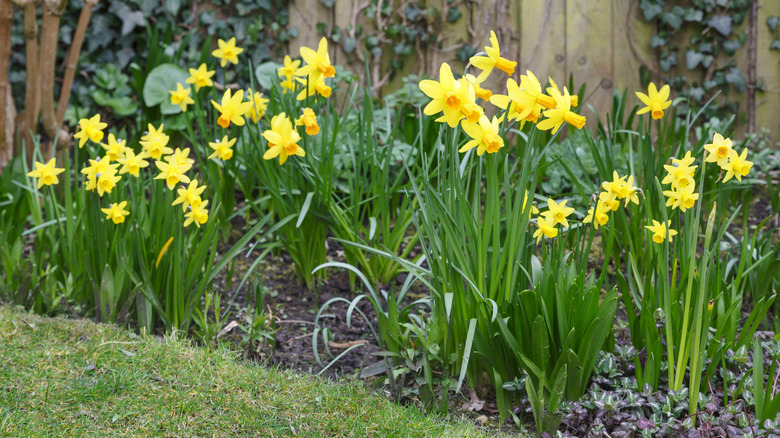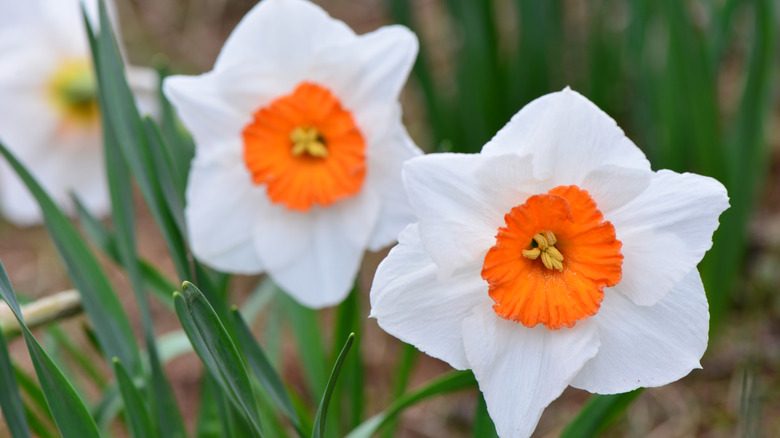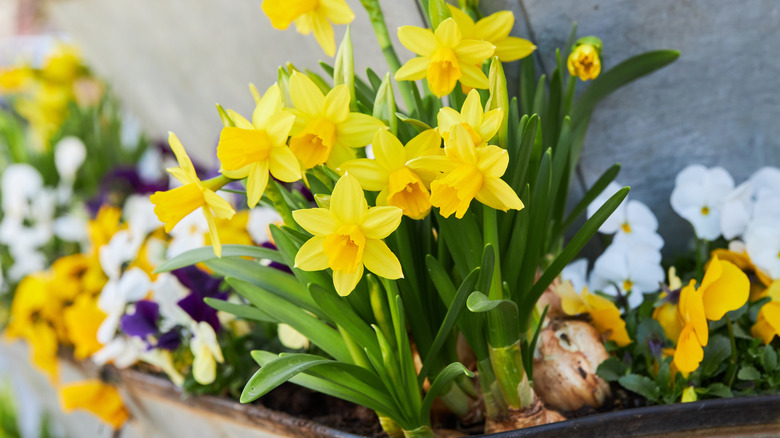Mini Daffodils Vs. The Classics- Which Is Right For Your Garden?
Are you trying to pick out daffodil bulbs for your spring garden, but can't decide if you should go with the traditional, large-flowered variety or choose something smaller? When most people think of a daffodil (Narcissus spp.), they picture the classic big yellow flower on a tall stem. There's no denying that this type of daffodil is beautiful, but you shouldn't overlook its smaller relatives — miniature daffodils. Considering dwarf species and cultivars of this iconic spring flower is a clever tip for growing daffodils that are perfect for the conditions particular to your garden. Broadly speaking, grow standard daffodils if you want large splashes of color along borders. Mini daffodils work better to fill in small spots in rock gardens and under trees.
The most important difference between these two types of daffodils is their size, and how that difference impacts your garden depends on where and for what reasons you plant them. The word "miniature" in front of "daffodils" applies to the entire plant. It's not referring to simply the plant's height; it means that everything on the plant is scaled down in size, including the flowers. For example, standard daffodils can grow as tall as 20 inches, while their dwarf counterparts grow to about 6 inches high with 1-inch flowers, though there's currently no official standard. You can use this knowledge, along with species- and cultivar-specific care requirements, to find the daffodil that's the perfect fit for your garden — whether it's large or diminutive.
Tried and true: standard daffodils
Standard daffodils are popular plants for U.S. gardeners because they are tough, come back yearly, and typically grow well in USDA Hardiness Zones 3 through 9, depending on the species or cultivar. Plus, their toxicity keeps away deer and squirrels. However, understanding each species' or cultivar's unique features is the key to picking the right daffodils to plant in your growing space. The classic yellow or golden trumpet daffodil (Narcissus pseudonarcissus) is one of the most popular. Cultivars like 'Dutch Master' and 'Mount Hood' are good for naturalization, which means planting them outside a garden bed and letting them spread on their own. They do well under deciduous trees because they can soak up the sunshine early in the season before new tree leaves grow in.
The flowers of modern large-cup daffodil hybrids like 'Ice Follies' (white petals with a yellow cup) and 'Professor Einstein' (white petals with an orange cup) have voluminous centers shorter than their petals. These blooms are usually planted in perennial borders or containers to add a burst of color in mid-spring. The double daffodil varieties, such as 'Tahiti' and 'Bridal Crown,' are ruffled and often fragrant, making them perfect for bouquets. Tazetta daffodils (Narcissus tazetta) grow well in Zones 5 to 9. Some varieties, like 'Geranium,' are known for their heat tolerance. This cultivar also boasts clusters of small, sweet-smelling flowers, sometimes up to six on a single stem. For the greatest visual impact, plant standard daffodil bulbs in clusters of five or more.
Small blooms, big charm: miniature daffodils
If you love the look of classic daffodils but need a smaller flower for tight spaces, consider miniature daffodils. They are just as tough as their larger cousins, with excellent cold hardiness — many varieties grow happily down to Zone 3, sometimes too much so. If they ever start to spread more than you'd like, knowing how to remove daffodils if they're taking over your garden is a handy skill. The tiny stature of miniature daffodils makes them an excellent choice for rock gardens. Tuck them between stones without overwhelming other plants. They also look stunning in containers and window boxes. Bring them indoors to enjoy the blooms in winter. You can also plant them in the front of a perennial border or around a patio to appreciate their downsized features up close. Like all daffodils, they're deer and rabbit resistant.
A popular choice among mini daffodils is 'Tête-à-Tête.' It's an early-blooming cultivar that usually reaches 6 to 8 inches tall and grows one to three yellow flowers per stem. For a more unusual form, look for hoop petticoat daffodils (Narcissus bulbocodium), which have a wide, funnel-shaped cup, three to five flowers per bulb, and small petals. 'Golden Bells,' a hoop petticoat daffodil cultivar, sprouts 5 to 15 flowers per bulb, works well for naturalizing, and grows in Zones 4 to 9. The jonquil (Narcissus jonquilla) is the parent of many miniature daffodil hybrids and is known for its strong, sweet fragrance. This flowering bulb grows well in Zones 4 to 8, blooms in late April and May, and grows up to 12 inches tall.


